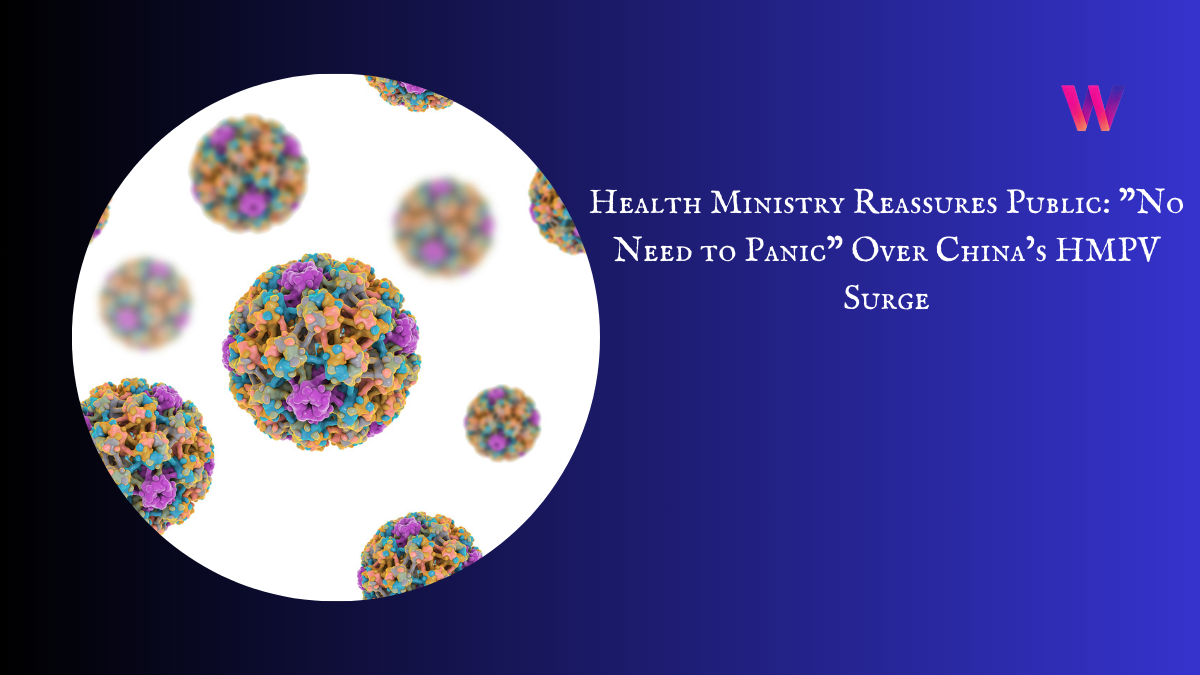In recent weeks, China has faced a rise in cases of Human Metapneumovirus (HMPV), sparking public concern and memories of past respiratory outbreaks. The Health Ministry, however, has urged calm, emphasizing that the current surge aligns with seasonal respiratory trends and is not as severe as feared. While HMPV is lesser-known than influenza or COVID-19, understanding its nature and impact is crucial for public reassurance and effective response.
This article explores what HMPV is, why it’s causing concern, and how the current surge compares to past outbreaks. We’ll also delve into preventative measures, treatment options, and the Health Ministry’s reassurance to ease anxieties.
What Is HMPV?
HMPV, or Human Metapneumovirus, is a respiratory virus first identified in 2001. Belonging to the Pneumoviridae family, HMPV causes infections similar to the common cold but can lead to more severe illnesses such as bronchitis and pneumonia, particularly in vulnerable populations like young children, the elderly, and those with compromised immune systems.
Symptoms of HMPV include:
- Runny nose and congestion
- Cough and sore throat
- Fever and headache
- Wheezing and shortness of breath (in severe cases)
While most infections resolve within a week, complications can arise, especially among at-risk groups. Unlike some other respiratory viruses, there is currently no specific antiviral treatment or vaccine for HMPV, making prevention and supportive care critical.
The HMPV Surge in China
Reports of rising HMPV cases in China, particularly in northern regions, have led to overcrowded hospitals and heightened public concern. The surge, however, aligns with typical seasonal patterns for respiratory viruses, as emphasized by the Chinese Health Ministry.
The Ministry has highlighted:
- Seasonality: HMPV cases usually peak during the winter months, similar to influenza.
- Milder Impact: The current outbreak has not reached the scale or severity of previous respiratory epidemics, including COVID-19.
- Localized Spread: Most cases remain confined to specific regions, reducing the risk of nationwide disruption.
This assurance aims to mitigate panic and encourage rational responses based on scientific evidence and public health measures.
Comparing HMPV to COVID-19
The parallels between the current HMPV surge and early COVID-19 panic are understandable but misleading. Unlike SARS-CoV-2, the virus that causes COVID-19, HMPV is not novel; it has been studied for over two decades. Key differences include:
| Aspect | HMPV | COVID-19 |
|---|---|---|
| Transmission | Primarily through respiratory droplets | Similar, but more contagious |
| Severity | Mild in most cases | Severe for a significant percentage |
| Vaccine Availability | None currently | Multiple available globally |
These distinctions underscore the lower threat level posed by HMPV despite its recent rise in cases.
How Is HMPV Treated?
Without a targeted treatment or vaccine, HMPV management focuses on alleviating symptoms and supporting recovery. Common approaches include:
- Rest and Hydration: Ensuring the body has time to recover.
- Symptom Relief: Over-the-counter medications can address fever, cough, and congestion.
- Medical Intervention: In severe cases, oxygen therapy or hospitalization may be required.
Early diagnosis and attention to worsening symptoms are critical for those in high-risk groups. Public awareness campaigns can help educate individuals on when to seek medical attention.
Prevention: Reducing the Risk of HMPV
Preventing HMPV relies on basic hygiene and public health practices that have proven effective against many respiratory viruses:
- Hand Hygiene: Regular washing with soap and water for at least 20 seconds.
- Avoiding Close Contact: Especially with individuals displaying symptoms of illness.
- Masking: In crowded or high-risk settings, wearing a mask can reduce exposure.
- Cleaning Surfaces: Regularly disinfecting frequently touched objects and surfaces.
- Boosting Immunity: Maintaining overall health through proper nutrition, exercise, and sleep.
These measures are particularly vital in schools, eldercare facilities, and hospitals, where vulnerable populations are concentrated.
Global Implications of HMPV
While HMPV has not garnered the same level of attention as COVID-19 or influenza, its impact should not be underestimated. Health experts emphasize the importance of ongoing surveillance and research to develop effective treatments and vaccines. Globally, the following steps are crucial:
- Investment in Research: Identifying antiviral therapies and exploring vaccine possibilities.
- Public Education: Raising awareness about symptoms and prevention.
- International Collaboration: Sharing data and best practices to mitigate outbreaks.
The Chinese experience with HMPV serves as a reminder of the interconnectedness of global health systems and the need for vigilance against all forms of respiratory viruses.
Indian Health Ministry’s Role in Calming Public Concerns
Indian Health Ministry has taken a proactive approach to address public fears, emphasizing transparency and evidence-based messaging. Their reassurance that “there is no need to panic” reflects confidence in the country’s healthcare infrastructure and ability to manage the surge.
Key messages include:
- Encouraging Vaccinations for Other Respiratory Illnesses: Influenza and COVID-19 vaccinations can reduce overall healthcare strain.
- Promoting Responsible Behavior: Encouraging symptomatic individuals to stay home and seek medical advice.
- Engaging the Public: Regular updates and clear communication help build trust and reduce misinformation.
Conclusion
The recent surge in HMPV cases in China highlights the ongoing challenges posed by respiratory viruses. While the rise in infections has caused concern, the Health Ministry’s assurances and the relatively mild nature of most cases provide reasons for optimism. By understanding HMPV and adhering to preventative measures, individuals can protect themselves and their communities.
As global health continues to face new and familiar challenges, vigilance, education, and collaboration remain our most potent tools. Together, we can navigate these outbreaks with resilience and knowledge.
